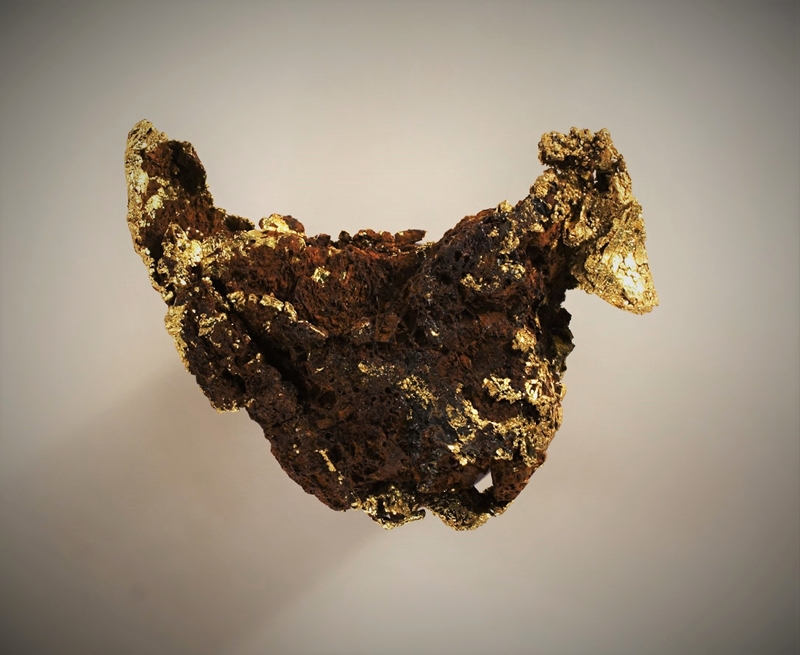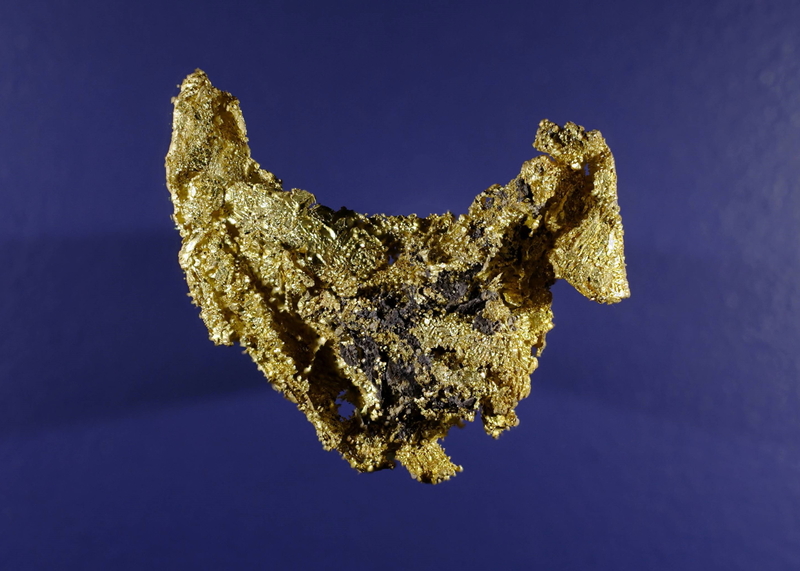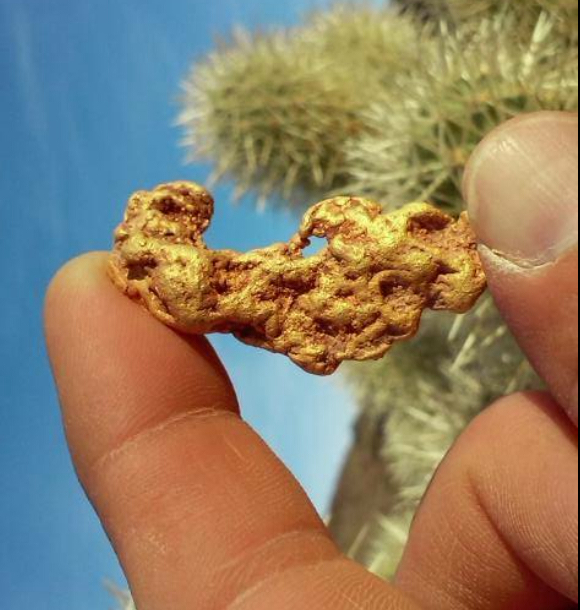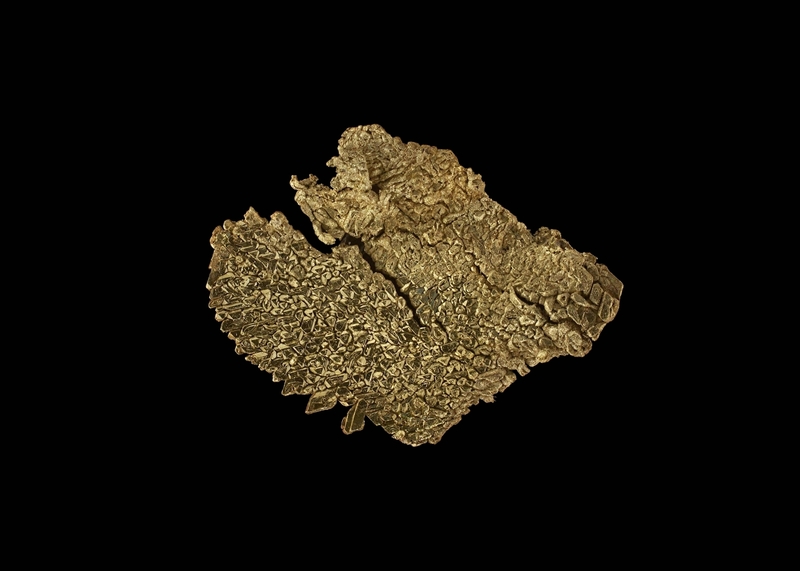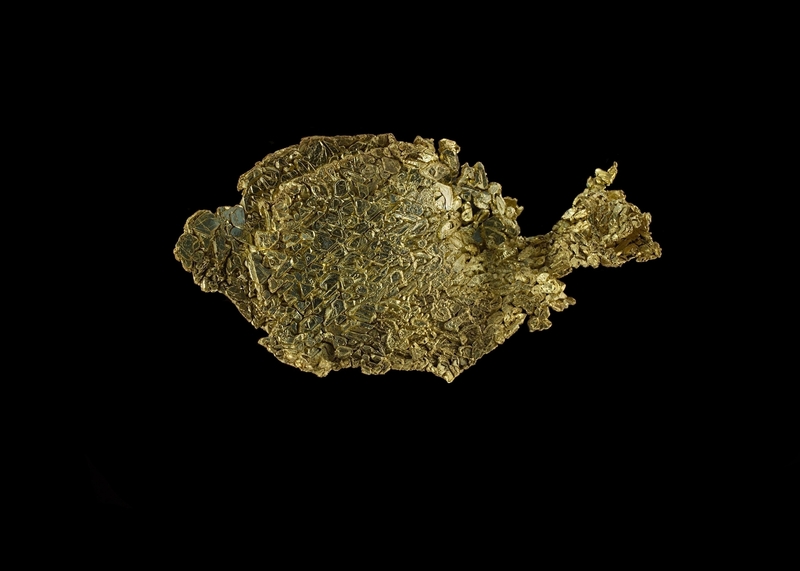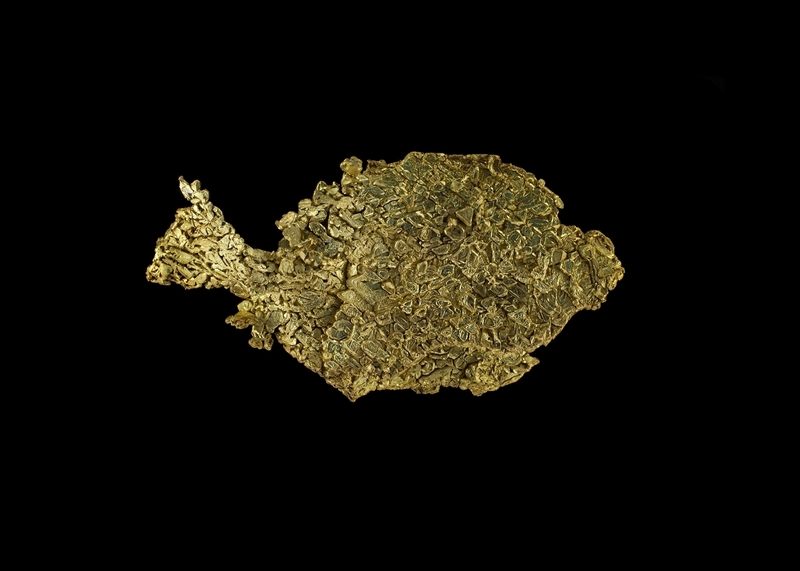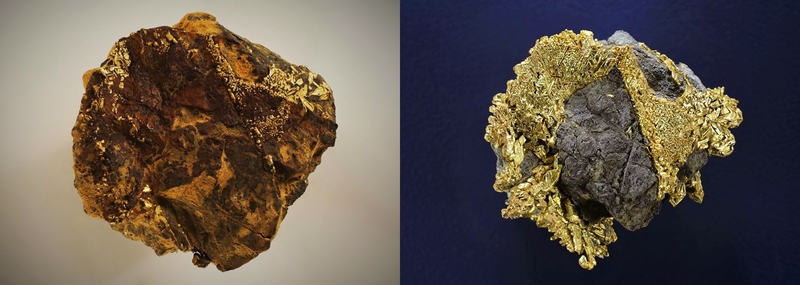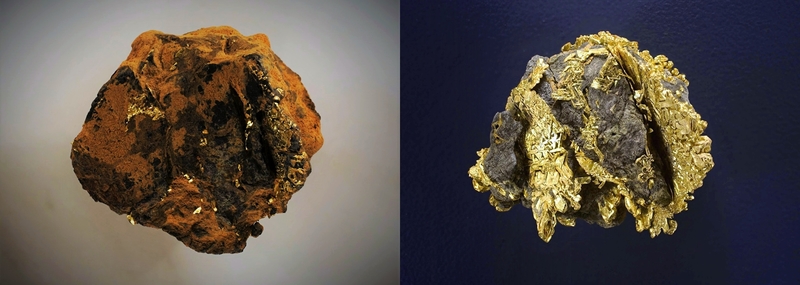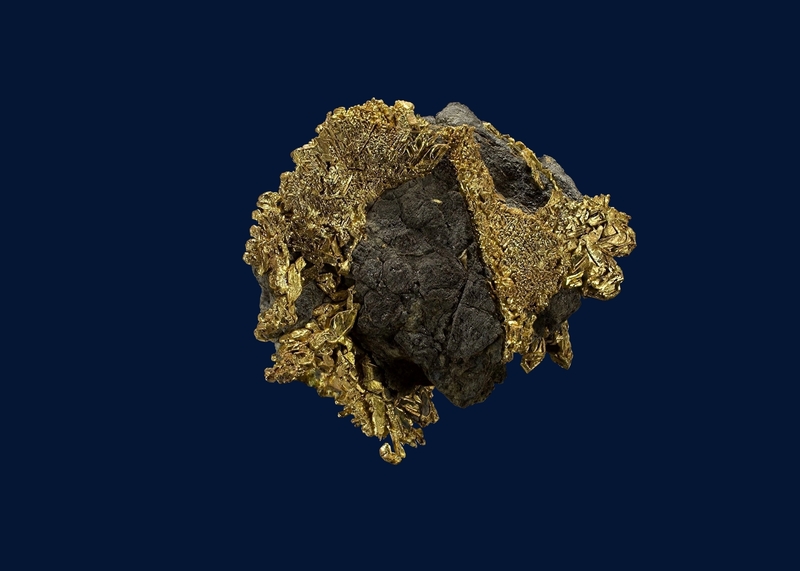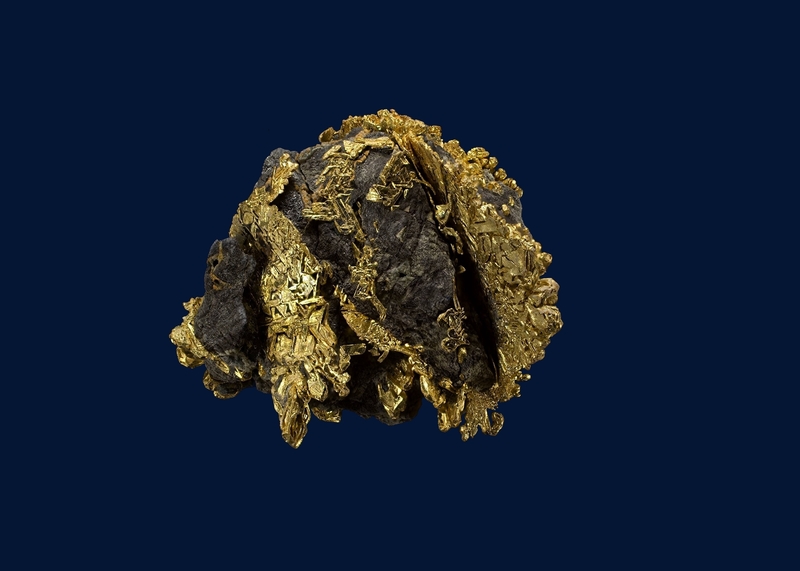-
Posts
554 -
Joined
-
Last visited
-
Days Won
3
Content Type
Forums
Detector Prospector Home
Detector Database
Downloads
Everything posted by Glenn in CO
-
Nice One! Keep them coming!
-
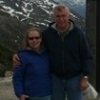
Gold Pan Suggestions
Glenn in CO replied to DSMITH's topic in Gold Panning, Sluicing, Dredging, Drywashing, Etc
I like any gold pan (steel or plastic) that has a large or wide bottom. I find it easier to get the gold to separate from the black sands with a larger bottom. When you start looking at gold pans some have very narrow or small bottom and vary in size to a large or wide bottom. You will find all combinations of riffles built into the side of the gold pan. They all work depending on your skill. -
Hello GU, The reason the nickel was reading all over the place is the coin is made of 94.5% steel, 3.5% copper and 2% nickel. I also found one this week a 1948 Canadian nickel and it was reading all over the place like yours on my detector, but my coin is made of 100% nickel and is also magnetic. Glad you able to get out for a little enjoyment!
-

Detecting Ore Tailings From Drift Mining Operation
Glenn in CO replied to Andyy's topic in Detector Prospector Forum
Hello, Andyy. I and my wife have detected tailing piles in Colorado with great success. From the information you described it sounds like the miners were sorting the higher grade ore (the classified or crushed ore) from the lower grade ore ( larger pieces). What we found in the past is the miners only had there eyes to determine what was high grade ore vs. the lower grade ore and what they couldn't see was thrown on the low grade ore or waste rock pile. Sometimes these tailing piles have productive areas within the tailing piles that contain small pockets of gold specimens when miners were in very rich vein material and also found productive areas that formed a horizontal line across the tailing pile as they dumped ore on to the tailing pile. There maybe some very nice gold specimens to be found. I would recommend using a high frequency VLF detector if the mineralization isn't to bad or a PI that detects small or sponge specimen gold. Let us know what you find! -

Best Coin Detector Suggestions
Glenn in CO replied to Lighthouse's topic in Metal Detecting For Coins & Relics
Keep in mind even though you could have the best gold machine and best coin machine that's on the market that you could purchase doesn't guarantee you instant success. Your success is going to depend on how well you know how to use the type detector you decide on, what you are looking for and the area you decide to search. There are many metal detectors with old technology that are being used and great finds being found. Find a mentor through a club, dealer or forum to help reduce the learning curve you will have, if not expect some frustration and challenge in learning how, what type and where to use the right metal detector. There are many good all around type of detectors on the market that will find gold, coins, relics and jewelry, you have to decide what make and model you will feel comfortable using. Believe me everybody that was a newbie had the same questions and concerns. -

Seeking Detector Suggestions For Colorado
Glenn in CO replied to Lighthouse's topic in Detector Prospector Forum
I and my wife have detected and prospected for gold in Colorado for over forty years in Colorado and specialize in searching mine dumps that contain gold that a high frequency VLF can easily detect. Most gold found in stream and rivers in Colorado will be on the small side. There are some placer areas that are yielding some large nuggets today in Colorado by mechanical methods and also using a metal detector currently on display at the Colorado School of Mines Museum. Visit the Denver Museum of Nature and Science and Colorado School of Mines Museum to see specimens from different areas of the state and obtain possible areas where one could use a detector. Also visit local museums that have a geology section that might have gold specimens for local mining areas. There are many gold and silver specimens that have been found in Colorado in the past with a metal detector that are troy ounce or larger in size and worth many times above current spot prices in value. Do the research and you could be rewarded quite nicely. Good Luck! -
My guess would be part of a brass steam whistle.
-

Animated Gold Nuggets. Lets See What You Got!!!
Glenn in CO replied to Gerry in Idaho's topic in Detector Prospector Forum
-

Know Your Rocks Or Miss The Golden Dagger
Glenn in CO replied to Gerry in Idaho's topic in Detector Prospector Forum
My best guess would be limonite (rusty red color) on quartz. -

Animated Gold Nuggets. Lets See What You Got!!!
Glenn in CO replied to Gerry in Idaho's topic in Detector Prospector Forum
-

Animated Gold Nuggets. Lets See What You Got!!!
Glenn in CO replied to Gerry in Idaho's topic in Detector Prospector Forum
-

Can I Be Critical Of The Equinox Here?
Glenn in CO replied to Steve Herschbach's topic in Minelab Equinox Forum
I'm enjoying reading all the if's, what's, and why's the Equinox may or may not do in actual field testing (thank you Steve H.) and what many have perceive the Equinox will do without having the detector. I will be following with great interest as people actually put the detector to the test in different types of coin, relic, jewelry, prospecting, ground conditions scenarios. I'm very interested in purchasing the Equinox when they become available, but the purchase will be base on reliable information from users that will convince me this new technology is the real thing. I will have to put my research skills to the test on people who will be providing opinions and reviews on the Equinox. Weeding out the good and the bad. I have a feeling the reviews and opinions will be somewhat negative at first, but I believe that information will come from a lot first time users and inexperienced users looking for the next best thing. I believe the Equinox will take awhile to learn all its capabilities to its fullest extent. The coming months will be interesting to say the least. Just my two cents! -
I posted this information for people who might be following this thread and have a V3i and didn't realize their was a MXT program available. Sorry for not being more clear on my part.
-
The V3i has a MXT program in the library: Expert Menu > Program > Restore / Load > Library Program You'll find: Alluvial Scan, Beep-Dig, Chestnut, Coin, Coin & Jewelry, Common, Deep Silver, Dusk, Fireside, Hi-Pro, High Trash, Meteorite, Mixed Mode Pro, MXT, Pine, Prospecting, Relic, Salt Beach, SunshineIf you want to LOAD the MXT Program to play with it, use the NEW / Copy feature.
-
People always ask me "is that the way the gold specimen looked when you found it?" I reply no as it always requires some type of cleaning of the specimen. I also end up adding the comment " it's like opening a Christmas present, your excited to see what's inside!" Here's a before and after pictures of the gold specimen I previously posted:
-

How Well Do You Know Your Gold Detector?
Glenn in CO replied to Gerry in Idaho's topic in Detector Prospector Forum
Not knowing the mineralization of said area and to be on the safe side I would take a high frequency VLF detector for small and or sponge type of gold nugget or specimens. Two different types of PI detectors, one to find small gold nuggets in highly mineralize ground and one to fine deeper gold nuggets in highly mineralize ground. I won't list the brand of detectors I would take as there are many a person could chose from that would fit the criteria I listed above. A few different size and types of accessory coils would be consider also. -
-
Welcome to the Forum Skate, Here's is my opinion on someone considering hunting for nuggets for the first time. First nugget hunting with a detector is probably the hardest and most frustrating thing a person will experience when you compare it to coin, jewelry or relic hunting. Once you found your first nugget with your detector the confidence, ability and skills in using your detector will continue to grow. The way I was successful was learning to operate my detector correctly, using the correct type of detector for the area I'm searching in and knowing the geology and type of gold that will be found in the area that has promising ground. For me to be successful did not happen overnight. It took years, with different models and types of gold detectors and searching in a area that was and still is productive. I was a metal detector dealer for over twenty-five years, so the learning curve on using a gold detector wasn't hard, but learning the geology and type of gold to be found was a long process and continues to this day. I have gone to other states to search for nuggets and with limited knowledge on the geology and where gold can be found, it brings me back to my first day of nugget hunting and to prepare for the same long process if I'm to be successful again. I have seen individuals that are very experienced with a detector on productive ground and but still can't find gold. The more knowledge and information you can obtain from books and fellow nugget hunters that offer advice in the area you are hunting in, the greater success you will have. Today if I was newbie would I follow my own advice, probably not. I would though find a dealer that provides training in areas that are productive and training on how to use my detector correctly. That knowledge and experience that one would gain in a short amount of time would be invaluable.
-
Great Finds!! Thanks for sharing your knowledge and adventures.
-
Great finds and nice way to wind down the season at the cabin. Thanks! for sharing you story and photos.
-
This 5-day sale features 2,900 lots in multiple collecting categories including Mining, Minerals, Native Americana, Bottles, Gaming, Cowboy, Tokens, Numismatics, Railroad & Express, Postal History & Philatelic, Firearms & Military, and General Americana. The auction starts October 19th through October 23rd on the Holabirdamericana website: https://holabirdamericana.liveauctiongroup.com/auctionlist.aspx Item# 1198 list the Black Box Gold Detector This device is for the "black box" affectionado, the person that specializes in unique "tools" to "detect" gold. Metal tag on the top: "A.E. Meek T & B Co./ Makers/ Denver, Colo." The box has the name of one of the owners on the front of the opening top "Jack Bell." The device inside the box also has a tag (brass): "Sachs, Lawlor M & M/ Co./ Denver, Colo." The box is 6.5" square, 11" tall. the device fits snugly into the box. It has muscovite windows with gold foil connected to some "electrodes". A small box comes with it containing thin papers and some gold foil. A manuscript note calls the device a gold electroscope. Have fun looking at the items that up for auction!
-
Congratulations ! Now the other and bigger nuggets you search for will be much easier to find . The gold gods have smiled on you and may you luck continue.
-

Denver Gem And Mineral Show
Glenn in CO replied to Glenn in CO's topic in Rocks, Minerals, Gems & Geology
Hi Joe, I and my wife know Ken O., Larry B. and John V. We showed them the location where Ken found that specimen and as you say the rest is history. Unfortunately Ken sold that specimen to quick and he could of got a lot more for it than he did. We saw John V. and his mining partner Glenn G. at the show and caught up on recent and past finds in Colorado. Lots of amazing finds are still being found if you know where to go. -

Denver Gem And Mineral Show
Glenn in CO replied to Glenn in CO's topic in Rocks, Minerals, Gems & Geology
Sorry I didn't get this information to you before the show, I will let you know next year schedule or any shows or seminars in our area.

.jpg.098f6139f0ec519f07a46052ece97057.jpg)

